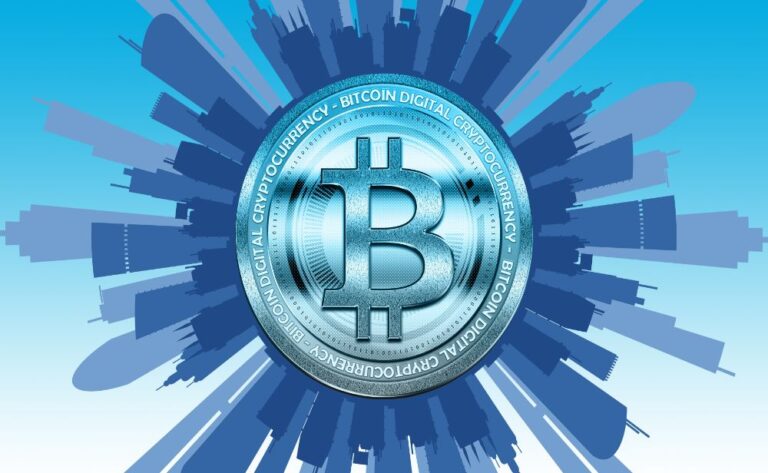A Review of TradeStation in 2022

Our Verdict
TradeStation can trace its origins back more than three decades, to when the company first began developing software for use in institutional trading. TradeStation’s desktop platform is widely considered to be one of the best available for sophisticated investors, helping to earn it a spot on our listing of the best online brokerages for day trading. This legacy continues to this day, and TradeStation‘s desktop platform is widely considered to be one of the best available for sophisticated investors. TradeStation enables users to not only build their own trading algorithms but also personalize the platform with any one of hundreds of available apps. Due to all of these factors, the platform is not the best option for beginners; nonetheless, it is without a doubt an excellent alternative for anyone who places a high priority on performance.
Pros
• Highly sophisticated trading platform suited for experienced traders and investors
• Users are able to add their own apps and even coded strategies to the platform, allowing for greater personalization.
• A wide variety of educational resources and academic research
• Commissions that are extremely low for the majority of investors
• Provides access to initial public offerings as well as equity markets in international countries
Cons
• A minimum deposit of $2,000 is required in order to make free trades on their desktop programme.
• Unreliable customer service, particularly over the phone and in live chat
• Obtains compensation for the flow of orders
• Desktop platform can be daunting for novices
• Both bonds and mutual funds have trading commissions associated with them.
• Demands account maintenance costs that are above the industry standard
Who Ought to Use the TradeStation Platform?
Day traders and serious investors often choose TradeStation as their platform of choice. Its trading platform is utilised extensively by institutional investors, including hedge funds, family offices, and the proprietary trading desks of investment banks, amongst others.
The desktop trading platform that TradeStation provides is extremely advanced. Not only does it provide robust charting, automatic trading, and real-time scanning of market indicators, but it is also highly customizable. You can write your own tactics directly on the platform if you know how to code, or you can download hundreds of apps that already exist to create new strategies and tools.
The TradeStation desktop software could be difficult to understand for less experienced traders and investors. Even though TradeStation offers web and mobile interfaces that are simpler to use, even these contain some features that are difficult to grasp for new traders. To begin, you will need to make a deposit of at least $2,000 in order to gain unrestricted access to the desktop platform. If you don’t achieve that minimum and trade on the desktop platform, each transaction will cost you $10 regardless of how much you trade. This can come as a surprise to first-time users.
Because TradeStation’s customer support wasn’t the best (more on that below), it could be difficult for new traders to acquire the assistance they might require when using the platform. Consider TradeStation if you are an experienced trader who is looking for a trading platform that ranks among the very best in the industry. Our selection of the top online brokers for beginners includes a number of excellent alternatives.
Commissions and Fees for Using TradeStation
Regarding brokerage commissions, TradeStation does an excellent job for its customers. However, the fee that you’ll have to pay will vary depending on the trading platform that you use (there are several to choose from), the assets that you trade, and the total volume of your trades.
The platform allows for commission-free trading of equities and exchange-traded funds (ETFs), but the order size must be less than 10,000 shares. If you make a deal for more shares than the 10,000 maximum, TradeStation will charge you $0.005 per share for each additional security you purchase. It is important to keep in mind that the primary customers of TradeStation are large institutional investors such as investment banks and hedge funds, who can potentially trade millions of shares each trading day.
Users need to give serious thought to which TradeStation platform best suits their needs. If you sign up for TS Select, which requires a minimum deposit of $2,000, you will be able to make free trades on the desktop programme, online via the web, and on the desktop application. If you join up with TS GO, which does not demand a minimum deposit to open an account, the only way you can make free trades is through the website or the mobile app. Users using TradeStation Go are required to pay $10 per trade while using the TradeStation desktop application.
There are no fees charged for stock options, futures, micro futures, or futures options contracts; however, TradeStation does charge a small fee per contract for the following financial instruments:
• Options relating to stock. $0.60 for each TS Select contract, and $0.50 for each TS GO contract
• Futures. 1.50 dollars for each contract of TS Select and 0.85 dollars for each contract of TS GO
• Micro futures. TS Select will cost you $0.50 every contract, while TS GO will cost you $0.50 per contract
• Futures options. $1.50 for each contract in the TS Select tier, and $1.50 for each contract in the TS GO tier.
The pricing for bonds and mutual funds on TradeStation is not as generous as it is for other asset classes. Each trade in a mutual fund will cost you $14.95, and trading bonds will cost you $14.95 each transaction + $5 per bond. Your cryptocurrency account balance, not the value of the transactions you make, is taken into consideration by the pricing structure used for cryptocurrencies. The fee is a percentage of your balance ranging from 0.05% to 0.30%, depending on how much money you have in your account.
TradeStation is compensated for order flow, which means that it is paid a fee in exchange for the service of routing trades to various market makers. It’s possible that this will provide market makers the opportunity to trade before investors do. TradeStation, on the other hand, claims that it does not include the magnitude of rebates into its decision-making when it comes to routing orders and that it applies the same fee to all market makers.
The amount of money you borrow determines the interest rate you pay on margin loans through TradeStation. They are extremely high for little trades, coming in at 9.50% for amounts that are less than $50,000 and 8.75% for amounts that are between $50,000 and $499,999. If you borrow more than $2 million, the rate drops to 3.5%, making it one of the most competitive in the market. The rate for loans between $500,000 and $2 million is 5.50 percent, which places it in the centre of the pack.
When it comes to the cost of other account types, TradeStation is not the best option. If your account balance is less than $2,000 or you do not make at least five trades in a given year, you will be subject to a cost of $50 per year for account inactivity. Additionally, it levies a wide variety of additional costs, such as $125 for an outward account transfer, $25 for an outgoing domestic wire, $1 for paper statements, and $75 for a forced margin payout. In our investigation of the online brokerage industry, we found that some brokers did not charge these fees at all, while others charged lower rates.
Platform and Technology Provided by TradeStation
The desktop trading platform offered by TradeStation is extremely cutting-edge and is an excellent choice for professional investors and day traders. This tool provides a wide range of research charts that can be customised, as well as automatic trading strategies and complex order management.
You are able to backtest trading tactics by utilising decades’ worth of pricing data, and you may assess the projected outcome of various options trading strategies. Additionally, the Radarscreen tool may monitor up to a thousand investments in real time and identify potential possibilities for you based on your selection of 180 technical and fundamental indicators.
The TradeStation platform is extremely modifiable, which is one of its many appealing features. It comes preloaded with a dozen trading apps, and you have the option to download hundreds more, each of which can provide additional trading indications, automatic investing techniques, and charts. EasyLanguage gives users who have some knowledge of coding the ability to develop their own trading strategies that can be implemented on many platforms. Last but not least, you can utilise its simulated trading tool to evaluate different investment methods at no cost and without the risk of losing any actual money.
Even though the TradeStation desktop platform has an abundance of tools for experienced traders, novice traders may find it challenging to manage all of those functions. Because of this, TradeStation also provides more user-friendly mobile and web platforms. Its web platform does not allow for as much customization as its desktop counterpart, but it does still include charting, rapid order placement and execution with a single click, streaming market data, account monitoring, and access to investment news.
The TradeStation mobile app synchronises with the web platform and provides capabilities that are comparable to those found on the web interface. These capabilities include quotations, charts, trade orders, options trading, and alerts about investments that you are monitoring. In contrast to other brokers, their mobile app does not include an AI tool that can be accessed by voice commands. The TradeStation technology and platform are really remarkable, with the exception of this one aspect that is now lacking.
Variety of Services Provided by TradeStation
TradeStation provides a fair selection of different types of investments. It provides trading in stocks, exchange-traded funds (ETFs), mutual funds, options, futures, bonds, forex, and cryptocurrencies, although it only provides trading in five different types of coins (Bitcoin, Bitcoin Cash, Ethereum, Litecoin and USD coin). It has access to international markets in Asia, Europe, and the United Kingdom, which is one of the reasons why its equities offerings are so amazing. Additionally, it sells penny stocks. In addition to this, it gives its customers the opportunity to participate in initial public offerings (IPOs), which are normally difficult for ordinary investors to gain access to.
Although TradeStation provides access to a big number of investments, the company’s customer service is quite restricted. It does not provide cash management accounts, which would allow you to earn interest on your cash holdings even if they were not invested. There are no advisory services available, so you won’t be able to get expert guidance on how to construct your portfolio or make trades. Last but not least, it does not sell shares in fractions. When purchasing stock, you are required to purchase entire shares; you are unable to purchase partial ones.
Research and Education Offered by TradeStation
TradeStation provides users with access to a comprehensive selection of instructional resources. The majority are geared toward instructing users on how to make use of the platform. It provides tutorials and suggestions that have been specifically built for each of its mobile, online, and desktop platforms. Additionally, it provides tutorials that teach investors how to use investments in options, futures, and cryptocurrencies.
In addition, TradeStation provides a selection of articles that cover fundamental investment subjects such as “what exactly are ETFs?” and “how does margin trading function?” as well as a financial terminology guide. Signing up for the classes, events, and private investment coaching that YouCanTrade, an affiliate of TradeStation, has to offer is something that TradeStation advises you do if you want more advanced training. You also have the option to talk with other traders and instructors by visiting the support forums provided by TradeStation.
In the realm of research, TradeStation is comparable to other brokers like Charles Schwab in that it publishes certain market insights and news; however, the amount of content is not quite as extensive. The platform makes automatic connections to many sources of market news and analysis, including information obtained from Yahoo finance. You can also download applications that are compatible with the TradeStation platform and can work along with it to offer additional research and market insights.
Security and Assistance for Customers at TradeStation
TradeStation customers can reach customer support representatives through phone, live chat, or email. It provides trading support for futures and cryptocurrencies around the clock, as well as customer service that is available Monday through Friday during normal business hours in the United States. As part of our investigation into the realm of online brokerage, we put each one to the test by posing a series of test questions to them and observing how they reacted.
The fact that live trading questions were the only ones that could be answered by TradeStation’s phone customer care was a major letdown. TradeStation is able to assist you in the event that you require assistance with an active trade; however, if you have any other issues, you will not be able to acquire answers to them through phone.
Their client support via email was satisfactory overall. The company provided accurate responses to all of our inquiries; nevertheless, the response times were on the sluggish side, lasting at least one day longer than expected, and some responses even took four days. The support provided via live chat was unreliable. We were only able to get an instant response to one of our questions, however, and after holding for more than ten minutes without an agent appearing, we gave up on the other three.
TradeStation provided an account security level that was about par for the course. It offers firewall protection, 256-bit encryption (which is superior to the standard 128 bits), and two-factor authentication for mobile devices. TradeStation does not, however, provide other mobile security features or voice-recognition for customer care. Voice-recognition for customer service is a security feature that is becoming increasingly popular with online brokers.
TradeStation customers are protected by the Securities Investor Protection Corporation (SIPC) with the standard level of coverage of $500,000. SIPC is an insurance programme that protects the custodial function of a brokerage. If a brokerage firm goes bankrupt, SIPC will either replace or reimburse a customer’s cash and assets. In addition to that, it provides you with additional insurance coverage of $24.5 million for your investments and $900,000 for your cash.
About the TradeStation Platform
Two brothers, Bill and Ralph Cruz, started TradeStation in the 1980s under its previous name, Omega Research. They started out as a trading software company, offering individual investors tools that didn’t require them to have a previous background in software or a mainframe computer. In 2001, Omega Research transitioned into TradeStation, an online securities brokerage. At this time, the company bore a new identity.
Today, the Monex Group, one of the major online financial service providers in Japan, owns TradeStation in its entirety, making TradeStation a completely owned subsidiary of the Monex Group. TradeStation has offices all around the world, including Texas, Chicago, New York City, London, Hong Kong, Costa Rica, and Tokyo in addition to its headquarters in South Florida.





